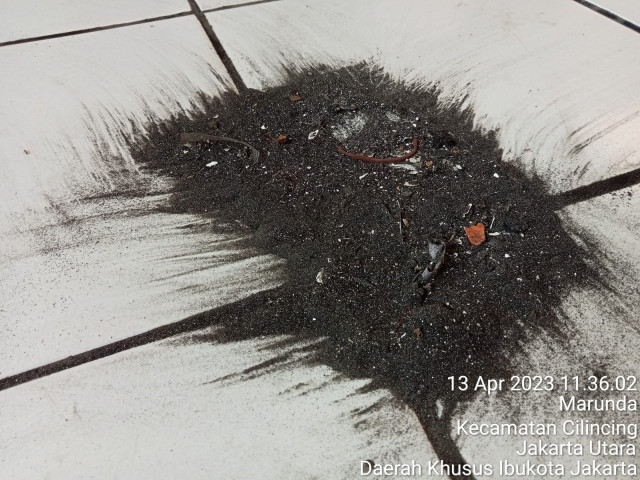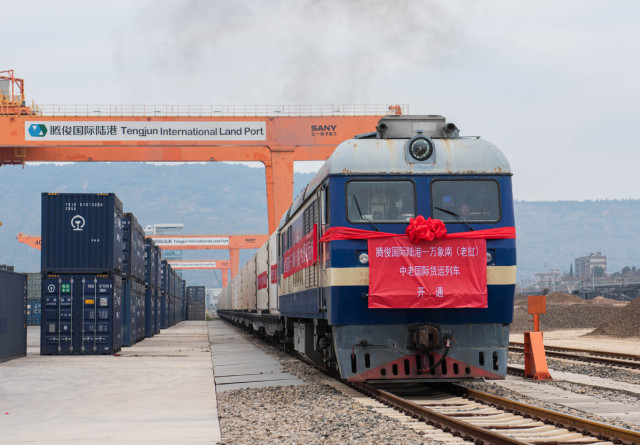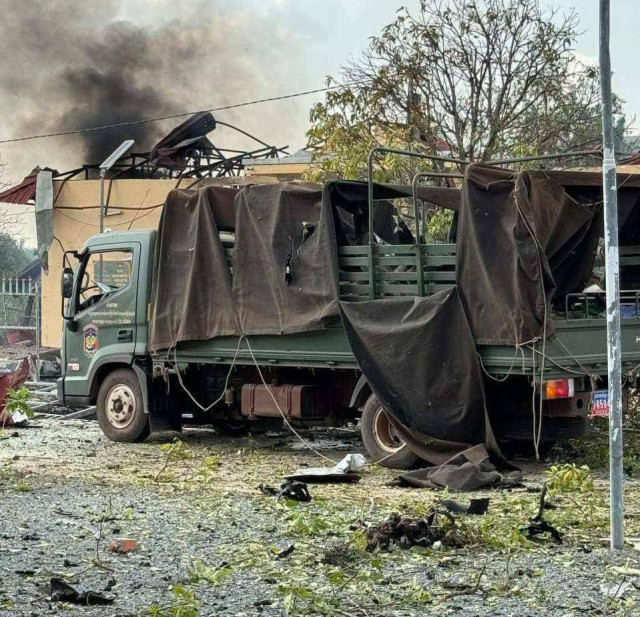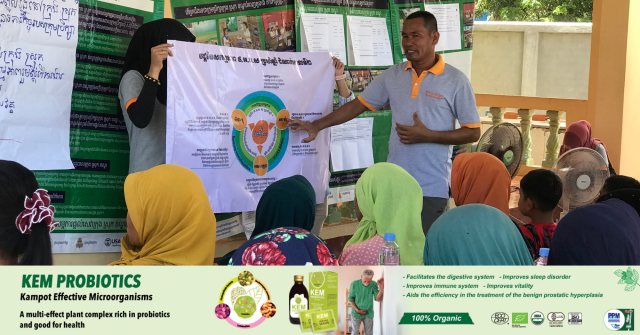‘Even the Wind Was Black’: Locals Bear Cost of Indonesia’s Coal Habit

- By Joan Aurelia Rumengan | Reporting Asean
- August 26, 2023 1:08 PM
JAKARTA--To Jeani, it feels like all she did in 2022 was clean her home. The mother of four was changing her clothes and her family’s bedsheets two or more times a day. She washed dishes repeatedly, rinsed them multiple times. As for cooking, she did that as fast as possible to prevent the dust in her home from going into the food.
Jeani was not obsessing about cleanliness. She was trying to cope with the persistent coal dust that was coating her home, and that of her neighbours in a public housing complex in Marunda, North Jakarta.
She also kept the windows shut all day, and was drying the laundry inside bedrooms. She recalls forbidding her children from leaving home, even though their five-by-six metre space was already cramped for her, her husband and children.
“Last year, I took my kids to the emergency room almost every month,” said Jeani, who asked to be identified by her nickname. “They suffered from breathing problems and cough,” she added, her voice upset.
Jeani’s community has been struggling with poor air quality since 2019, due to the black, fine coal dust that comes from the loading and unloading of coal, used for coal-firing in the electricity and industrial sectors, at Marunda Port, some 5 kilometres away. Coal supplies are typically ferried by sea.
“Even the wind was black because it carried dust from the port,” Jeani recalled, describing it as sharp-edged and rough to the touch.
The handling of coal and hosting of stockpiles at the Marunda logistics port sends flying bottom ash (FABA) – waste produced from the burning of coal - into the air. Coal handling is done at the port’s main terminal, operated by PT Karya Cipta Nusantara (KCN) company.
Today, Marunda residents continue to live with polluted air, although they say it has not reached 2022 levels.
Several discussions have been held through the last four years among frustrated residents, housing complex authorities and KCN. Jakarta’s city government has examined KCN’s operations and done health screenings, but Marunda’s dirty air problem persists.
“We want the government to take care of our health, pay for our medication and health expenses and explain to us the long-term impact of FABA pollution,” said Cepi, a resident who, like Jeani, is a member of the Forum Masyarakat Rusunawa Marunda (Rusunawa Marunda Residents’ Forum).
While the Marunda community’s story is about accountability on a public health issue – it is also an example of the real-life, daily costs that locals bear as part of Indonesia’s reliance on coal, a fossil fuel that is the biggest contributor to Earth-warming carbon emissions. It also reflects the balancing act that the country’s ambitious energy transition is.
Indonesia, the world's third largest producer of coal, relies on coal for more than 61% of its electricity production. It is also the world’s leading exporter of thermal coal, and ranks highest among 21 countries in the Coal Transition Exposure Index.
AMBITIOUS, UNCLEAR COAL PHASEOUT
At the same time, Indonesia has pledged to reach net-zero carbon emissions by 2060. In 2022, it obtained a 20 billion dollar commitment under the Just Energy Transition Partnership (JETP) international facility, to speed up its transition away from fossil fuels.
Indonesia is the ninth-largest emitter of carbon dioxide, although its per-capita emissions are half the world’s average, the International Energy Agency (IEA) says.
The early retirement of coal power plants and a halt to new investments are core to the country’s transition roadmap. Speaking in Germany in April, Indonesian President Joko Widodo said: “In 2025, 23 percent of energy will come from renewable energy. In 2050 all coal plants will be closed. We walk the talk, not only talk the talk.”
But Indonesia’s coal habit continues to exact social and other costs, like the health burdens that Marunda’s residents know only too well.
When asked about Indonesia’s coal phaseout, Cepi seemed confused. “What?” he asked and after a few seconds, continued, “Coal phaseout?” After being briefed about it, he said: “No, I didn’t know about it. I never heard of it.” What he knows is that coal has been bringing negative health impacts to people in Rusunawa Marunda (‘rusunawa’ means low-cost housing complex). “Not just our residents,” he added, “but also people that lives around the industrial area (here)”.
“The government environment agency said that this is coal pollution. But they still don’t give us any compensation or action to free us from this pollution,” said Cepi, who also asked to be identified by his nickname.
The adverse effects on health caused by the burning of coal for electricity and other industrial uses, which releases harmful toxic particles like nitrogen oxide, sulphur dioxide, and PM 2.5 fine particulate matter, mercury into the atmosphere, are well-known. The inhalation of coal dust triggers respiratory and cardiovascular diseases, inflammation and neurodegeneration, affecting the lungs, heart, brain, reproductive system and DNA.
A 2020 report by the Centre for Research on Enery and Clean Air listed 418 industrial facilities within a 100-kilometre radius of the greater Jakarta area. This number includes 136 facilities from highly emitting sectors like cement, steel, oil and gas refining and power and energy – including coal-fired plants – that make Jakarta among the world’s most polluted cities.
Widodo himself told a cabinet meeting on 14 August that the current bad air in the capital was caused by "excessive road traffic, a long dry season, and manufacturing industry mainly those using coal."
Indonesia’s average level of PM2.5 in 2022 was the highest among nine Southeast Asian countries at 30.4, exceeding World Health Organization guidelines by 5 to 7 times, reports Switzerland-based IQAir. Annual exposure to PM2.5 in Jakarta is at 47, or 9.3 times the safe level listed by WHO, says the BreatheLife Network.
Indonesia’s government says it is set on reducing its coal habit.
There are 13 to 14 government-operated coal power plants, totalling 4.8 gigawatts, that are ready to be retired when funding is ready, Dadan Kusdiana, director-general of new, renewable and energy conservation at the Ministry of Energy and Mineral Resources, said in July.
In its updated climate commitments in 2021, Indonesia’s strategy includes reducing the share of coal in its energy mix to at least 30% in 2025 and further to at least 25% in 2050.
A 2022 presidential regulation confirmed the early retirement of coal plants and a moratorium for new ones after 2023. “The development of new coal power plants is prohibited,” Presidential Regulation number 122/2022 said.
But it allows the construction of approved projects and those included in the Electricity Procurement Plan 2021-2030, such as captive plants (those not connected to the grid but provides power directly to industries). Critics call these major loopholes in Indonesia’s commitments.
Likewise, over 60% of Indonesia’s electricity is supplied by young fleet coal-power plants, “whose installed capacity will meet a significant share of demand for years to come unless steps are taken now to mitigate their emissions”, said the International Energy Agency.

“In Indonesia, concern about the JETP’s implementation is mainly about the timeline and clarity on exactly how the cessation of the use of coal for power generation is to happen,” Melinda Martinus and Qiu Jiahui wrote in a June brief for the ISEAS-Yusof Ishak Institute.
“Indonesia's commitment to halt the construction of new coal power plants in 2021 is shrouded in ambiguities. Although initially set [at] a deadline of 2023, it was subsequently extended to 2025,” said Andri Prasetiyo, senior researcher at Senik Centre Asia.For example, she says, the Indonesian government’s 2021-2030 energy plan lists fossil-fuel projects that include 13.8 gigawatts from coal.
In sum, coal will continue to dominate the country’s energy mix. Indonesia’s coal capacity is projected to climb to 64% of electricity generation by 2030, reports Climate Action Tracker.
ANSWERS AND ACCOUNTABILITY
While government agencies, including health officials, have confirmed that Marunda residents have problems with coal dust, they want answers – and accountability.
“This is what we monitored. We have also reviewed several locations where there are factories still use coal. We’ve tested the emission levels and they are still in a normal level. But there are flying ash (coal dust) that went to the rusunawa,” Asep Kuswanto, Jakarta Environment Agency head, was quoted as saying in December 2022.
In early 2023, Cepi said, the Jakarta Environment Agency said they would analyse the dust particles. In February, the local government put up an air monitor in one of the buildings in the Marunda complex, which has 26 towers and 2,580 home units. Residents were told that results from the National Research and Innovation Agency’s study are expected after several months.
“We also demand that the government let us know what company caused this coal pollution”, said Jihan Fauziah Hamdi, a lawyer with the Jakarta Legal Aid Institute that has been working with the residents. “How's the result of the field verification this year? How is the surveillance going? Is there any more sanction on the company that did not follow the rules?”
As of end-June, the legal aid group has yet to receive a reply to the follow-up letter to the environment agency that it sent on 10 May.
KCN, meantime, has legal authority to continue operations while its request for a permit is pending with the environment and foreign ministry, Kuswanto said in January.
In July last year, the company lost its environmental permit. The city’s environment agency had ordered it to stop operations after it failed to address some violations, including those that Kuswanto said involved “overlooking administrative requirements to errors in the process of unloading coal”.

KCN president director Widodo Setiadi was quoted as saying in March: “We see there are people who are eager for us to clash with the provincial government. That’s why there are movements asking the regional government to close, revoke the environmental impact assessment immediately, even though all have been completed.”
At end-June this year, a neighbour sent Cepi photos of coal stevedoring activities at the Marunda port. Sixty-six persons among the Marunda residents reported having breathing problems, headaches and cough from January to March 2023, Cepi added.
Officials from the Jakarta Environment Agency-North Jakarta did not respond to requests for comment. The communications head said “sorry” for not being able to comment.
“What happened in Rusunawa Marunda is evidence that our government does not put public health as their priority,” Ahmad Ashov Birry of Trend Asia, a civil society group working on energy transformation, said in an interview.
Said Cepi: “We just want the government do proper supervision over the companies that use coal for their industrial activities – and make sure there are zero negative impacts to us,” he said.















